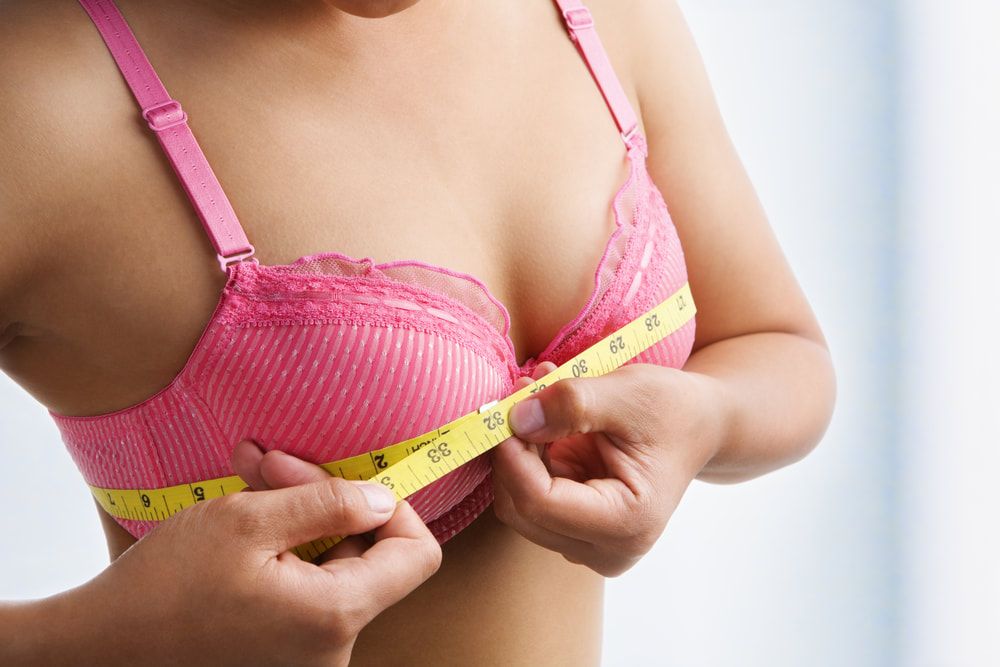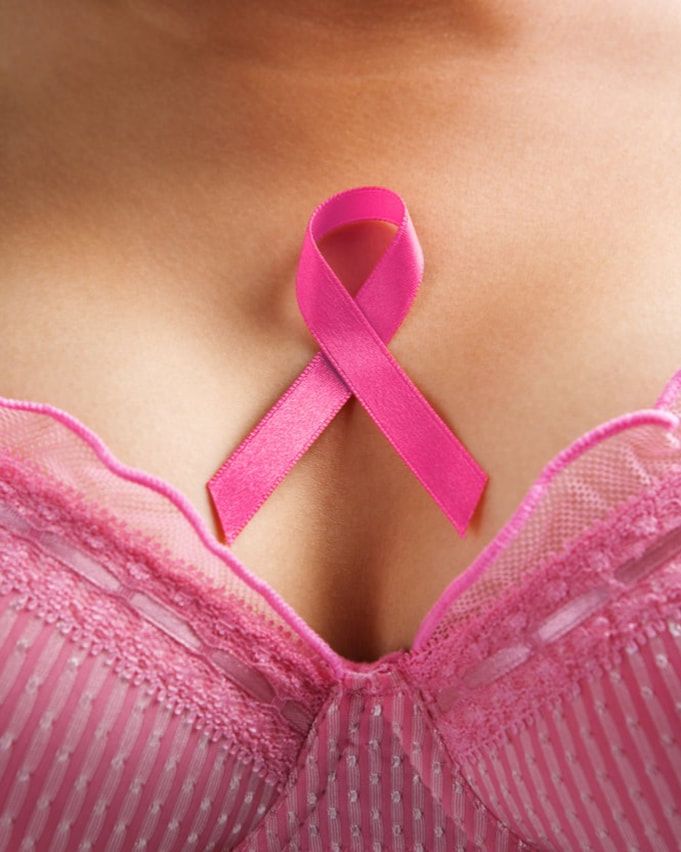Is Your Bra Making You Sick?
While discomfort, a lack of lift, and issues with support are all common problems associated with a poorly fitted bra, you would be surprised at how many health concerns could be directly linked to simply wearing a bra that doesn’t fit properly.

NATIONAL BREAST CANCER AWARENESS MONTH
While discomfort, a lack of lift, and issues with support are all common problems associated with a poorly fitted bra, you would be surprised at how many health concerns could be directly linked to simply wearing a bra that doesn’t fit properly.
A massive 80% of women wear ill-fitting bras, with 70% wearing one that is too small and 10% wearing one that's too big. But why do 80% of women wear the wrong-sized bra? Is it out of ignorance, embarrassment, or maybe even basic laziness?
There is so much publicity media surrounding breast health in recent years thanks to a variety of high-profile campaigns. October is Breast Cancer Awareness Month, a worldwide, annual campaign involving thousands of organizations that highlight the importance of breast health awareness, education, and research. Yet many women are still unaware of the connection between general breast health and wellbeing and wearing the right sized bra!

Here are some of the top health problems that can be attributed to wearing an ill-fitting bra:
- HEARTBURN, IBS, AND INDIGESTION: An ill-fitting bra can cause pressure on the diaphragm, which may lead to complications in the digestive system. This is because the underwire causes pressure to build around the stomach and lower esophagus. Tissues can end up being pushed and pulled in unnatural directions. This can cause the wearer to suffer from heartburn, IBS, indigestion, and even a hiatus hernia.
- BREATHING PROBLEMS: An ill-fitting bra puts pressure on your muscles and bones, which can cause serious breathing problems for bra-wearers. Such health conditions can be triggered because the tightness of the bra can affect your posture and the positioning of your organs. This generally relates to a bra that is too tight and too small for your breast size.
- HEADACHES: A poorly fitting bra offers a lack of support to the cleavage, which then means the neck and upper back muscles have to work harder to support the weight of the breasts. As soon as the neck muscles become overworked, you are far more likely to get headaches (known as cervicogenic headaches, or neck in origin headaches.)
- BACKACHE AND STIFF NECK: A bra that is too tight restricts movement in the upper back, causing stiffness and aching in the spine. Spines are designed to move, bend, and rotate, but experts believe that wearing shoulder straps of the bra too tight often causes localized stiffness at the spine and neck because the back muscles shorten as the chest is pulled forward.
- POOR POSTURE: A poorly fitted bra can pull your shoulders and neck down, which results in your spine curving and rounded or hunched shoulders, as the woman will naturally sit and stand awkwardly to compensate for her unsupportive bra. Over time, discomfort is certain to follow.
- PINS AND NEEDLES: If a bra is too tight, it can create pressure on the nerves, muscles, and blood vessels around the shoulders and rib cage. This can lead to pain and even constant pins and needles in the arms.
- SKIN IRRITATION: An ill-fitting bra can also cause skin problems for you. Stretch marks, chaffing, permanent grooves in your shoulders, or sores caused by the underwire poking into your underarm or rubbing under your bust are some of the skin irritations that wearing the wrong bra can cause. Your bra should never rub or dig into your body, regardless of your shape and size.
- INTERTRIGO: This common rash usually develops under the breasts. As the breasts rub against the skin, bacteria or yeast start to form, leading to infection of the rash. Women with larger breasts are usually more prone to this infection. However, whether you are large or small-breasted, wearing the wrong bra will cause your skin to chafe, resulting in inflamed, itchy skin under your breasts because of all the sweat and friction caused by the underwire again the abdomen — possibly leading to infection.
- BREAST CYSTS AND BREAST CANCER: Though controversial, several doctors and researchers have pointed to a link between bras (especially underwire bras) and increased risk of breast cysts and cancer. This is because underwire bras are thought to impede the movement of breast tissue and cause lymph tissue to gather toxins which are believed to increase the risk of developing breast cysts and cancer. Over 85% of the lymph fluid flowing from the breast drains to the armpit lymph nodes. Most of the rest drains to the nodes along the breastbone. Our lymph system is like the “garbage disposal for the body,” and it flushes out the body’s toxins. Unlike our cardiovascular system, however, the lymph system does not have a pump to move the fluid. Instead, the movement of our body is fully responsible for flushing toxins through the lymph. Yes, that means breasts are supposed to bounce!

Are you ready to make a lifestyle change and ditch your bra? No? Not surprising. If you can’t see yourself making the change, there are still steps you can take to improve your overall breast health.
- Purchase a non-underwire bra. There is a wire-free movement amongst millennials, as women no longer want to sacrifice comfort over style. If your bust is on the smaller size then opt for a non-underwire bralette from your favorite lingerie brand; the bralette is very on trend for 2017! If your bust is on the larger size then opt for an Optifit bra, a new bra aimed at larger busted women that’s completely wire-free and made from a material that is flexible enough to conform to the body but sturdy enough to support the weight of the breasts.
- Massage and bounce your breasts before bed to aid lymph flow.
- Wear your bra as little as possible.
- Never ever sleep in a bra, as it is at night when the detox processes of the body rev up. We need to support that natural detox by keeping the breast tissue unconstricted. Plus removing one's bra is the best, most relaxing part of the day for some of us!
- Don’t get hung up on your bra size. We are so attached to our sizes and carry our bra sizes around as a piece of our identities! There’s a lot of stigma around any breast size that is bigger than a DD. From movies, TV, and song lyrics, we’ve been taught that “double Ds” imply sex, or at least someone with a look-at-me personality. Pop culture would suggest A cups are shorthand for shyness or immaturity. And for women with boobs bigger than a DD, an F or G cup size often just seems like a synonym for “fat.” No wonder so many women wear bras that are too small and ill-fitting! Who cares what size you are? As long as the fit is great, it shouldn’t matter!
- Practice monthly self-breast exams. Gently massage the breast tissue looking for small, hard lumps that weren’t there the month before. If you find anything unusual, schedule a follow-up with your doctor immediately.
The above tips are all very important parts of every woman’s breast health. It is easy to get caught up in the aesthetics of your bust line and the prettiest and sexiest lingerie in fashion. But you should love your breasts the best way you can and treat them to a properly fitting bra!
OPTIFIT, The Affordable Custom Made Solution to your Plus Size Cup Problems.
Written by Optifit
Optifit is the first clinically validated therapeutic bra and fitting system, promoting a balanced posture, and reducing musculoskeletal health problems associated with larger bust sizes. Our mission is to EMPOWER women to feel beautiful and confident in their own skin. It is our goal to educate women on breast health issues and provide guidance to help women obtain optimal breast health through wearing the best possible bra. Being breast aware is very empowering!





